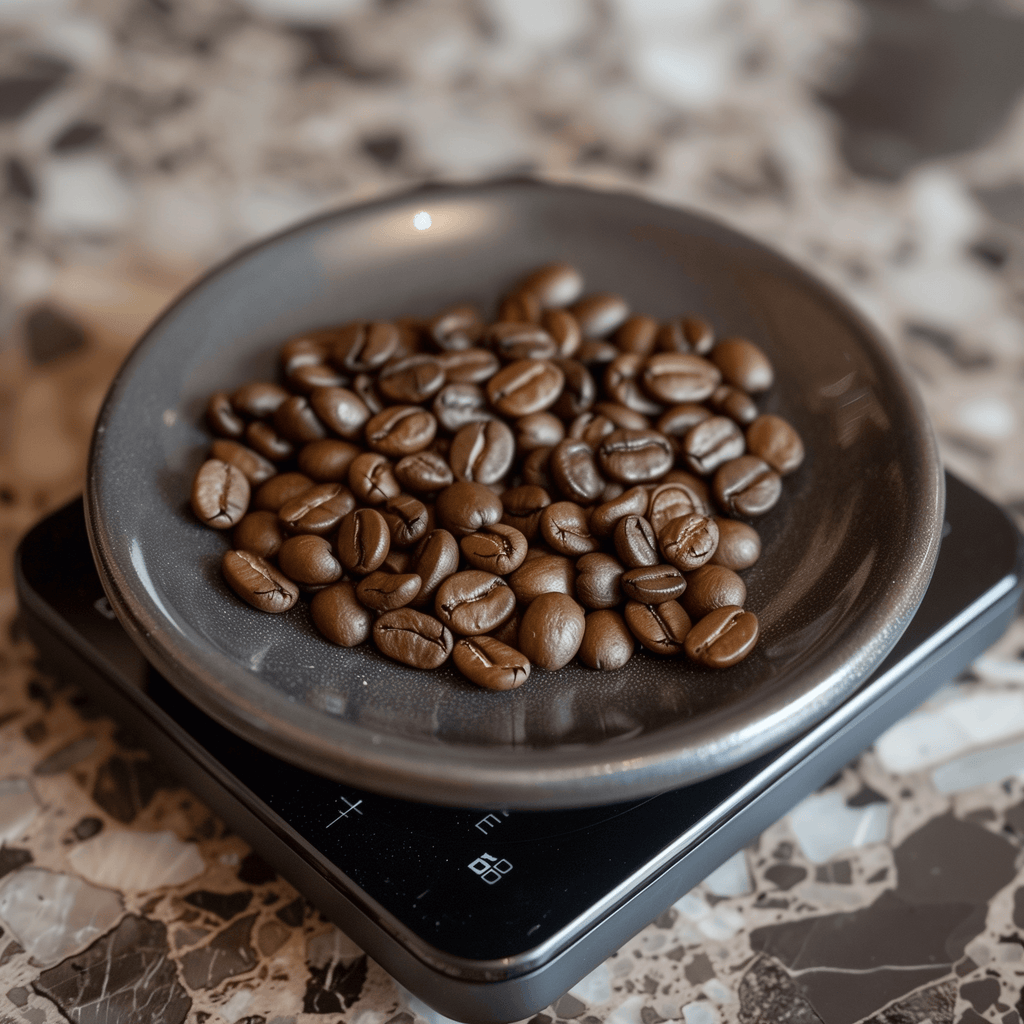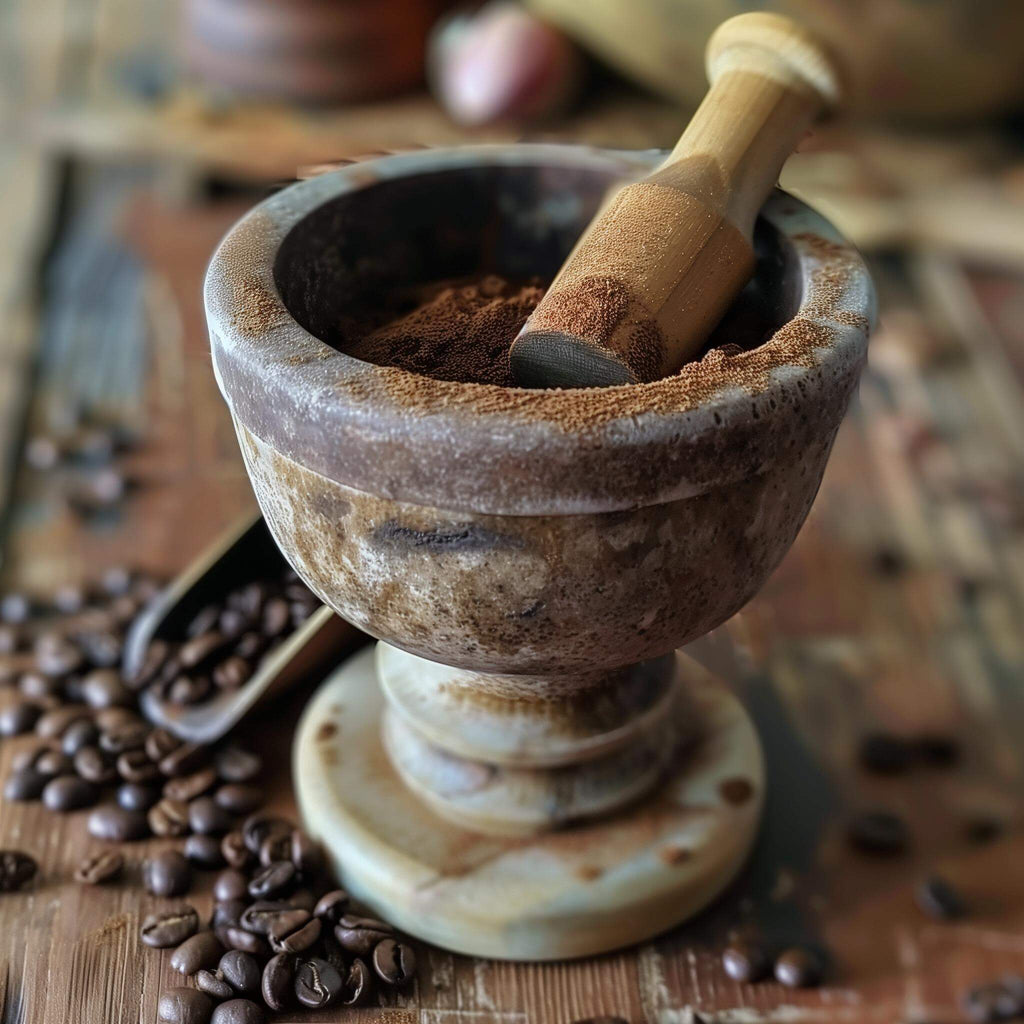How to Grind Coffee Beans
The essence of a good coffee lies not just in the choice of beans or the brewing method, but also in the grind. In this informative guide, you’ll learn how to select beans for grinding, determine the right grind size, measure the beans accurately, and use a coffee grinder effectively. For those without a coffee grinder at hand, we will also introduce some manual methods.
Key Takeaways
- Opt for whole bean coffee over pre-ground for the best flavor, as whole beans retain their freshness longer.
- Choose high-quality, single-origin Arabica beans for a superior grinding and brewing experience. Avoid flavored beans to prevent damage to your grinder.
- Match the grind size to your brewing method—fine for espresso, medium for drip coffee, medium-coarse for pour over, and coarse for French press or cold brew.
- Use a kitchen scale for accurate coffee-to-water ratios, enhancing consistency and flavor in your brew.
- Prefer burr grinders for a uniform grind size and better flavor extraction. Blade grinders, though affordable, lack consistency and can overheat beans.
- In absence of a grinder, opt for manual methods like a mortar and pestle, rolling pin, or a blender for coarse grinds, keeping in mind the variance in consistency.
- Store coffee grounds in an airtight container in a cool, dry place to maintain freshness.
Selecting Beans for Grinding
When it comes to coffee, using freshly ground beans is vastly superior to pre-ground coffee.
Pre-ground coffee starts to lose its flavor and aroma shortly after being ground, while whole coffee beans can retain their freshness for several weeks or longer if stored properly.
This makes buying whole bean coffee and grinding it yourself right before brewing the best way to experience the full flavor and nuance of different coffees.
When selecting coffee beans for grinding, opt for high-quality, single-origin Arabica beans whenever possible. Lower quality robusta beans or generic coffee blends don't highlight the complexities that can come through in a fresh, single-origin coffee. Look for beans that were roasted recently, preferably within the past 1-2 weeks.
Try different origins, roasts, and flavor profiles to find your favorites. Stay away from flavored beans, as the oils and flavorings applied can gunk up your grinder over time. Focus on high-quality, lightly or medium roasted single-origin beans for an optimal grinding and brewing experience.
Selecting Grind Size

The size of the coffee grounds is one of the most important factors in coffee brewing. The grind size affects the rate at which water flows through the grounds and how much flavor is extracted.
There are four common grind size categories:
- Fine grind - Particles are tiny, like table salt. Best for espresso.
- Medium grind - Particles are slightly larger than fine, about the size of kosher salt. Ideal for drip coffee.
- Medium-coarse grind - Particles are the size of coarse sand. Works for manual pour over brewing.
- Coarse grind - Particles are very large, similar to sea salt or coarse sand. Used for cold brew and French press.
The ideal grind size can vary depending on the roast level, bean variety, and brew method. Lighter roasts and high elevation beans tend to require a finer grind. Darker roasts and low elevation beans can use a coarser setting. In essence, match your grind to your brewing method.
Measuring the Beans

To achieve a consistent and accurate measurement, it's best to use a kitchen scale that can measure in grams. This allows for precision that measuring by volume (like with scoops or measuring cups) can't match.
The Specialty Coffee Association recommends a general guideline of 1:18, which is one part coffee to eighteen parts water. For example, for every 500 grams of water, you would use about 28 grams of coffee beans. Adjust the ratio to taste; some prefer a 1:15 or 1:17 ratio for stronger flavors.
How to Grind Coffee Beans With a Grinder
The two main types of coffee grinders are burr and blade. They function differently and produce different grind results.
Burr Grinders
Burr grinders use two abrasive surfaces to grind the coffee beans. The beans are crushed between a moving burr and a stationary burr. The space between the burrs determines the grind size.
These grinders produce a very consistent and uniform grind. They allow you to adjust the grind size for different brew methods. So unlike a one-size-fits-all approach, burr grinders offer a wide range of grind sizes. You can adjust the coarseness or fineness based on your brewing method.
Burr grinders can be manual or electric. Manual burr grinders give you more control over the grinding process but require more physical effort. Electric burr grinders automate the grinding and are quicker and easier to use.
Pros
- Consistent grind size for better flavor extraction
- Ability to adjust grind size
- Cool operation minimizes heat damage
- Quieter than blade grinders
Con
- Expensive
- Cleaning and maintenance required
- Slower grind speed
Blade Grinders
Blade grinders use a high-speed blade to chop and crush the coffee beans. The grind depends on how long the grinder runs. The grind size is inconsistent, with lots of fines and boulders.
Pros
- Very affordable option
- Compact and portable
- Fast grinding
Cons
- Uneven grind size
- Can overheat beans
- Noisy operation
Grinding the Beans
Once you've measured out the beans, you're ready to grind them. Here's the step-by-step process for using a burr grinder:
- Place the grinder on a flat, stable surface. Make sure the hopper is securely attached.
- Check that the grinder is set to the correct grind size for your brew method.
- Add the measured beans to the hopper.
- Hold the ground coffee catcher or portafilter under the spout where the ground coffee will dispense.
- Turn on the grinder. The grinding process usually takes 20-30 seconds, depending on the amount and the grind setting.
- When the grinding is complete, turn off the grinder. Tap the hopper gently to dislodge any remaining grounds.
- Remove the ground coffee catcher or portafilter full of fresh grounds. Enjoy the lovely aroma.
- Transfer the grounds to your coffee brewer immediately, as ground coffee quickly loses its aroma and flavor.
- Wipe down the grinder to remove any stray grounds or oils.
How to Grind Coffee Beans Without a Grinder

Here are a few manual methods for grinding coffee beans without a grinder.
Mortar and Pestle
A mortar and pestle is one of the oldest tools used for grinding. Simply place the beans in the mortar and use the pestle to grind them down to your desired consistency. Start with a twisting motion, and then switch to pressing down for a finer grind.
This method gives you total control over the grind size. It's also as fresh as it gets since the beans are ground immediately before brewing. And no electricity is required.
However, it takes a lot of physical effort and patience, and the grind can be inconsistent. This inconsistency can lead to uneven extraction, affecting the final flavor of your coffee. Also, the mortar and pestle can overheat if used for long periods.
Rolling Pin
Place your coffee beans in a zip-lock bag or between two sheets of parchment paper. Use a rolling pin to crush the beans with moderate pressure. Roll back and forth until you achieve the desired coarseness. Be careful not to crush the bag or paper.
This technique is easy to do and great for travel and camping. It also helps prevent messes. The downside is that it's very difficult to get an even grind size.
Blender or Food Processor
While not ideal, a food processor or blender can be used in a pinch. Pulse a few seconds at a time to break down the beans without overheating the machine. Use short 1-2 second pulses and shake or stir between pulses for an even grind.
However, be cautious, as these appliances can overheat quickly and burn the grounds. Plus, don’t expect a fine grind.
Common Grinding Issues
When grinding your own coffee at home, you may encounter some common issues that affect the flavor and quality of your brew. Here are a few problems to watch out for:
Uneven Grind
An uneven grind means some particles are too fine while others are too coarse. This happens most often with blade grinders, which produce an inconsistent grind. The finer particles will over extract and taste bitter, while the coarser ones will under extract and taste weak or sour.
Overheating
Excessive heat can burn the coffee grounds, resulting in a bitter, unpleasant taste. This typically occurs when grinding large batches in a blade grinder. The friction causes the blades and coffee to get hot.
Storing Your Coffee Grounds for Freshness
Proper storage is necessary for maintaining your coffee's fresh-roasted flavor. Once the beans are ground, the clock starts ticking. Oxygen, light, heat, and moisture are all enemies of fresh-ground coffee.
The best way to store coffee grounds is in an airtight container, like a mason jar or opaque plastic container with a tight-fitting lid. Keep the container somewhere cool, dry, and dark - like a pantry or cupboard. Avoid refrigeration because the temperature fluctuations and moisture in a fridge can degrade the coffee over time.
Grinding Tips
Coffee tastes best when the grounds are freshly ground right before brewing. Here are some tips for getting the most out of your coffee grinder:
- Grind beans immediately before brewing. Coffee begins to lose its flavor within minutes after grinding due to oxidation. For peak freshness, grind just what you need right before brewing.
- Clean your grinder regularly. Old ground coffee left in the grinder will go stale quickly and can negatively impact the flavor of freshly ground beans. Brush out any remnants and wipe down with a damp cloth. Burr grinders should be disassembled for a deeper clean weekly to monthly.
- Use a scale for consistency. Weighing out coffee beans and grounds can help identify the optimal dose for your preferred brewing method. Aim for a 1:15 to 1:17 coffee to water ratio. Weighing also helps ensure each brew is consistent.



